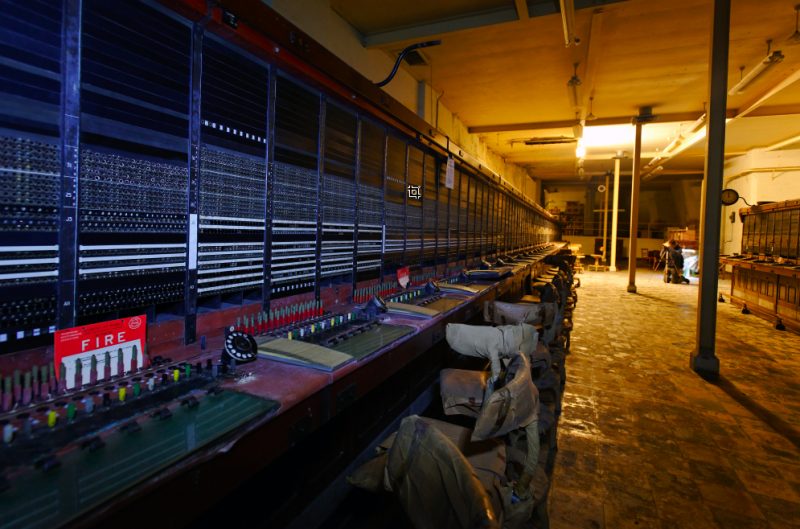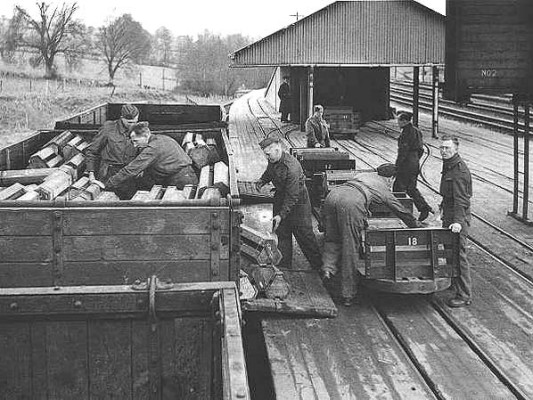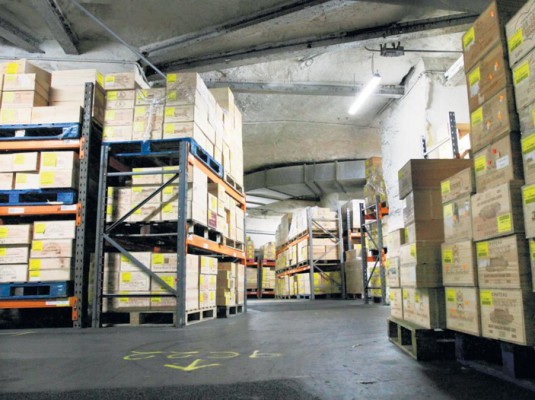What would people use a vacant war bunker for? Apparently many people in Wiltshire go in for collectors’ wines and use the bunker as a secret wine storage area.
A bunker made of Bath stone lies deep below the earth under farmland; it contains over 1.5 million cases of wine worth up £2bn. Single cases alone are worth £10,000 to £200,000. There are over 10,000 collectors, investors, and merchants from more than 39 countries that use the bunker to store their wines. It is otherwise known as Octavian’s Corsham Cellars.
Some of the people who keep their wines in the bunker include former Manchester United boss Sir Alex Ferguson, music composer Andrew Lloyd Webber, famous chef Michel Roux Junior, and even financier Guy Hands. Even famous companies store their wine there, including Corney & Barrow, Farr Vintners, John Armit Wines, and Goedhuis & Co., as well as Christie’s and Sotheby’s.
One employee who worked in the bunker wine cellar said that anyone who is important has wine there or has investments in it. He described it as being like an underground mine. Considering how much wine is in the bunker and how much the collection is worth, there are several security measures the employees have taken. There are motion detectors, steel doors, and even 24-hour guards. There are no visitors allowed due to the fact it is considered a working environment.
Corsham Tunnels Central Ammunition Depot Between the First and Second World Wars, however, a new role was found for the old workings. War clouds were gathering, and the rapid development of air power fuelled fears that the enemy bomber would always get through. The War Office decided that measures need to be taken to protect ammunition stocks from attack by hostile aircraft, and in 1935 the go-ahead was given for the construction of three ammunition sub-depots – one here at Tunnel Quarry, and the others at neighbouring Monkton Farleigh and Eastlays Ridge. Collectively, they were known as the Central Ammunition Depot (CAD). It had been estimated that CAD would take four years to complete but the first section – or ‘district’ – was ready by April 1938. Initially, the ammunition was lowered down a converted air-shaft by means of a steam winch but later, when all the ‘districts’ were completed, ammunition arriving by road or rail was unloaded at Surface Loading Platforms (SLP), one located at each sub-depot. Tunnel Quarry sub-depot had a standard gauge underground railway, complete with two platforms and locomotive
Collectively, they were known as the Central Ammunition Depot (CAD). It had been estimated that CAD would take four years to complete but the first section – or ‘district’ – was ready by April 1938. Initially, the ammunition was lowered down a converted air-shaft by means of a steam winch but later, when all the ‘districts’ were completed, ammunition arriving by road or rail was unloaded at Surface Loading Platforms (SLP), one located at each sub-depot.
Tunnel Quarry sub-depot had a standard gauge underground railway, complete with two platforms and locomotive shed, while the other sub-depots employed conveyor belts to connect with nearby railway sidings. Movement underground was by an ‘endless rope’ truck haulage system, similar to that used in coal mines. However, excessive noise and the danger posed by derailments led in 1940 to the system’s replacement by approximately 7.5 miles of conveyor belt at Tunnel Quarry and Eastlays Ridge. When completed, Tunnel Quarry sub-depot consisted of ten ‘districts’, each with approximately five acres of floor space. Giant fans drew in fresh air and expelled the stale, producing a stable atmosphere of 65oF and 80% humidity. By 1943, the Ministry of Defense had stopped using the mine, and it was bought in 1989 by Nigel Jagger, one of the warehousing experts of Cert Octavian.
The whole mine measures about one million square feet, making it larger than 22 football fields combined. Each vault is kept at a specific temperature of 13 degrees Celsius, which is believed is the best ambient temperature for wine.
Some of the finer, vintage wines that are being stored there are a 1996 Chateau Latour, a 2008 Chateau Lafite Rothschild, and a 1945 Chateau Lafite. Other wines being held there cost nearly as much as a small home. Those include a Petrus, a Palmer, a Margaux, and a Haut Brion – all considered as being from champion vintage years. Another rare wine is one from Hungary, a sherry.
There are almost 1,000 cases or bottles that date back from 1775 to 1800. Six years used to be the average time a wine would spend underground; since 2011 that’s increased to around eight and a half years. Since people are investing thousands of dollars, the employees have to be precise on the time allowed for the wines sit.
Another employee in the cellar said that it is almost like they are looking after pure, liquid gold. Although a mine isn’t the most ideal structure for storing wine, the environment in the mine is perfect for the wines to sit until they are mature. People who choose to use the ‘cellars’ for storing their wines have to pay £14/bottle a year. They also receive a Certificate of Pristine Storage which is said to increase the wine’s value by 15 to 20 percent.


